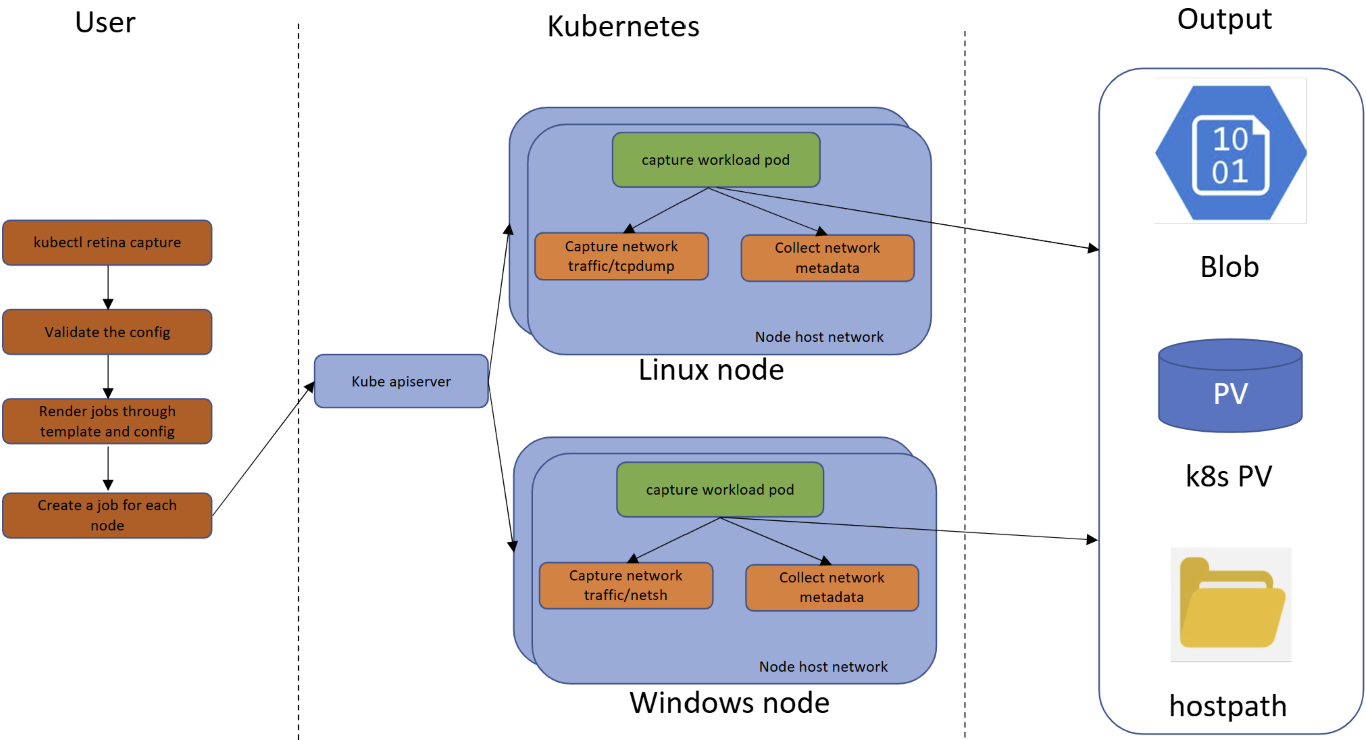Captures
Overview
Retina Capture allows users to capture network traffic/metadata for specified Nodes/Pods.
Captures are on-demand and can be output to persistent storage such as the host filesystem, a storage blob, etc.
Usage
There are two methods for triggering a Capture:
Option 1: Retina CLI
Prerequisite: Install Retina CLI
The command syntax is kubectl retina capture create [--flags].
Refer to the Capture Command documentation for more details.
Example
This example captures network traffic for all Linux Nodes, storing the output in the folder /mnt/capture on each Node.
kubectl retina capture create --name capture-test --host-path /mnt/capture --node-selectors "kubernetes.io/os=linux"
Architecture
For each Capture, a Kubernetes Job is created for each relevant Node (the Node could be selected and/or could be hosting a selected Pod). The Job's worker Pod runs for the specified duration, captures and wraps the network information into a tarball, and copies the tarball to the specified output location(s). As a special case, a Kubernetes secret will be created containing a storage blob SAS for security concerns, then mounted to the Pod.
A random hashed name is assigned to each Retina Capture to uniquely label it.

Option 2: Capture CRD (Custom Resource Definition)
Prerequisite: Install Retina with capture support.
Refer to the Capture CRD documentation for more details.
Managed Storage Account
To simplify the user experience, a managed storage account can be configured when setting up Retina. Instructions for this are provided here.
Example
This example creates a Capture and stores the Capture artifacts into a storage account specified by Blob SAS URL.
Create a secret to store blob SAS URL (and store it in blob-upload-url.txt):
kubectl create secret generic blob-sas-url --from-file=blob-upload-url=./blob-upload-url.txt
Create a Capture specifying the secret created as blobUpload, this example will also store the artifact on the node host path.
apiVersion: retina.sh/v1alpha1
kind: Capture
metadata:
name: capture-test
spec:
captureConfiguration:
captureOption:
duration: 30s
captureTarget:
nodeSelector:
matchLabels:
kubernetes.io/hostname: aks-nodepool1-11396069-vmss000000
outputConfiguration:
hostPath: "/tmp/retina"
blobUpload: blob-sas-url
More Retina Capture samples can be found here.
Architecture
Similarly to Option 1, a Kubernetes Job is created for each relevant Node.
